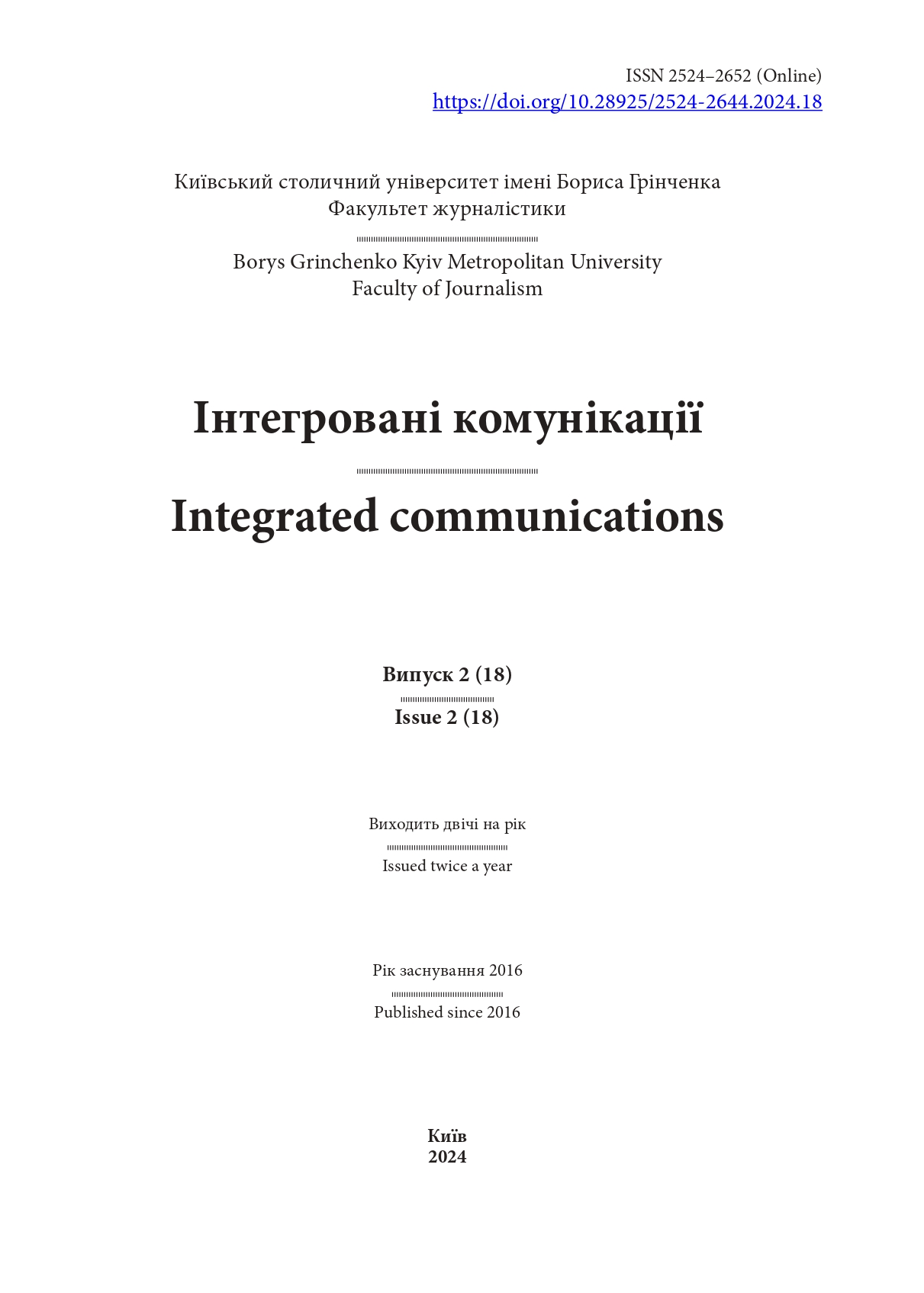EMERGENCY DISTANCE EDUCATION AS A SOCIAL COMMUNICATION STRATEGY IN UKRAINE AND THE WORLD
Abstract
The article addresses the relevant topic of emergency distance learning in Ukraine and worldwide during crises such as pandemics, military conflicts, and natural disasters. The aim is to explore and analyze the concepts of "distance education" and "emergency distance learning," focusing on their main characteristics, differences, and specific implementation features. The primary objectives of the article include examining scientific and practical approaches to the definitions and identifying key distinctions. The research methodology is based on a qualitative approach, employing literature review, content analysis, and case study methods.
An important aspect is the comprehensive comparative analysis of the interpretations of the terms, which allows for a deepening of the theoretical foundations. Emergency distance learning is characterized as a temporary, urgent transition from traditional forms of education to an online format in emergencies when educational institutions cannot provide the usual learning process.
Critical features of EDL are highlighted, such as the rapid implementation, limited time for preparation, and adaptation of educational programs and resources to new conditions. The article's authors highlight the differences between emergency distance learning and traditional distance education, which is usually planned and has a stable methodological basis. The article also discusses key challenges faced by educational institutions during the transition to EDL, including the technical and methodological unpreparedness of educators, the lack of necessary infrastructure, and limited access to the internet and digital resources in some regions.
The research findings demonstrate a significant impact of the pandemic and war on educational processes in Ukraine and worldwide. Emergency distance learning has become an important tool for supporting the educational system during the crisis; however, it has revealed several issues requiring further analysis and resolution.
Downloads
References
Abudalfa, S., & Salem, M. (2022). Effects of online course content and instructor characteristics on UCAS students’ academic performance during the COVID-19 pandemic. In B. Alareeni & A. Hamdan (Eds.), Explore business, technology opportunities and challenges after the COVID-19 pandemic (ICBT 2022, Vol. 495, pp. 347–359). Springer. https://doi.org/10.1007/978-3-031-08954-1_24
Anderson, T., & Dron, J. (2011). Three generations of distance education pedagogy. The International Review of Research in Open and Distributed Learning, 12(3), 80–97. https://doi.org/10.19173/irrodl.v12i3.890
Bozkurt, A. (2019). Intellectual roots of distance education: A progressive knowledge domain analysis. Distance Education, 40(4), 497–514. https://doi.org/10.1080/01587919.2019.1681894
Bozkurt, A., & Sharma, R. C. (2020). Emergency remote teaching in a time of global crisis due to the coronavirus pandemic. Asian Journal of Distance Education, 15(1), 1–6. https://www.asianjde.org/ojs/index.php/AsianJDE/article/view/459
Grynyuk, S., et al. (2022). Distance learning during the COVID-19 pandemic: The experience of Ukraine's higher education system. The Electronic Journal of e-Learning, 20(3), 242–256. https://www.ejel.org
Grynyuk, S., Zasluzhena, A., Zaytseva, I., & Liahina, I. (2020). Higher education of Ukraine plagued by the COVID-19 pandemic. In 13th International conference of education, research and innovation (ICERI). Valencia, Spain. https://doi.org/10.21125/iceri.2020.0667
Hodges, C., Moore, S., Lockee, B., Trust, T., & Bond, A. (2020). The difference between emergency remote teaching and online learning. Educause Review. https://er.educause.edu/articles/2020/3/the-difference-between-emergency-remote-teaching-and-online-learning
Huszti, I., et al. (2022). Distance learning as the new reality in tertiary education: A case study. Advanced Education, 21, 100–120. https://doi.org/10.20535/2410-8286.261705
Moore, M. G. (1993). Theory of transactional distance. In D. Keegan (Ed.), Theoretical principles of distance education (pp. 22–38). Routledge.
Nenko, Y., Kybalna, N., & Snisarenko, Y. (2020). The COVID-19 distance learning: Insight from Ukrainian students. Revista Brasileira de Educação do Campo, 5, 1–19. https://doi.org/10.20873/uft.rbec.e8925
Salmon, G. (2002). E-tivities: The key to active online learning. RoutledgeFalmer.
Sultanova, L., & Zheludenko, M. (2020). Potential of digital education in crisis conditions: Analysis and perspectives. The Scientific Heritage, 4(53), 46–49.
UNESCO. (2023, March 13). COVID-19 impact on education. https://en.unesco.org/covid19/educationresponse




